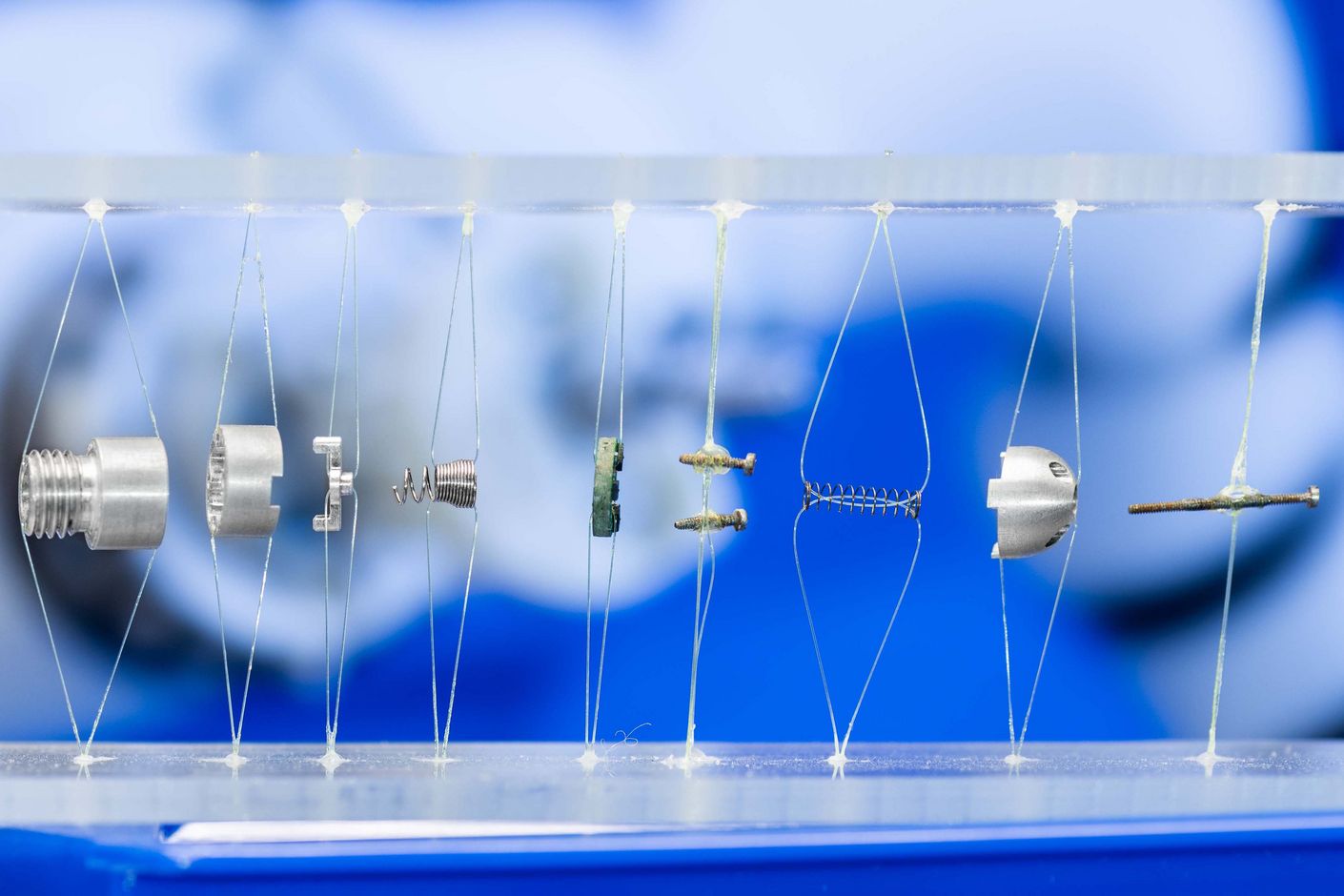
Bone-afide success
Minimally invasive, highly precise, quick recovery times—this is how some 50 researchers in the MIRACLE project envision bone surgery of the future. And the team at the University of Basel are getting closer to achieving their goal: their robot-guided laser tool is five times more precise than a conventional bone cutter and their SpectoVR 3D software is a runaway success. With their project firmly on track, the researchers have now trained their sights on miniaturisation and integration of the various components.
Using a bone cutter to saw through bone is a rather unpleasant thought for most of us. But now, the time-old medical instrument may soon belong to the past: since 2014, researchers at the Department of Biomedical Engineering at the University of Basel have been developing a robotic arm with a laser scalpel for use in high-precision bone surgery. Located at the Switzerland Innovation Park Basel Area, the MIRACLE project is led by Philippe Cattin, professor of medical image analysis, and Hans-Florian Zeilhofer, head of the Clinic of Oral and Maxillofacial Surgery at the University Hospital Basel. The main objective of MIRACLE (Minimally Invasive Robot-Assisted Computer-guided Laser OsteotomE) is to enable minimally invasive surgical operations using a laser osteotome—a surgical device used to cut through bone.
The art of engineering in medical care
The MIRACLE team unites specialists from medical robotics, laser technology, planning, navigation and intelligent implants. In their work to develop innovative software solutions and various prototypes, the researchers are in close contact with medical staff from the University Hospital Basel and the University Children’s Hospital Basel. “Some 50 researchers from our team are making the art of engineering available to doctors, to support them in their work,” says Philippe Cattin. The researchers have already created the laser robot GG1, which secures coordinated communication between laser technology, robotics and planning software. Most importantly, GG1 can make incisions as narrow as half a millimetre, meaning its laser incisions are up to five times finer than those of a conventional bone cutter. Thanks to the clean, precise cuts, bones can heal faster after an intervention.

The smallest order
The year 2019 was dedicated to miniaturisation and integration. “Our goal is to make the laser endoscope components as small as possible, so they can fit into the tip of the robot-guided endoscope,” says Phillipe Cattin. When operating with the endoscope, surgeons can move the laser “scalpel” with high precision through the human body. In addition, the robotics team of MIRACLE professor Georg Rauter created a miniature version of a parallel robotic endoscope tip to enable repetitive, exact incisions in minimally invasive interventions; the researchers are currently optimising the technology.
Intelligent lasers
The Biomedical Laser and Optics Group of Professor Azhar Zam are currently working on an intelligent laser able to detect tissue in the body; in a future development, the laser will be able to identify tumours. The research group of Hans-Florian Zeilhofer is now focused on further developing minimally invasive implant and device technologies. Over 120 patients have already received implants during neurosurgical interventions. In collaborative projects with large clinics in Switzerland and Germany, the first minimally invasive implants are now in the planning stages.

Smart implants
In April of 2019, privatdocent Dr Stefan Stübinger, co-head of the MIRACLE group “Smart Implants”, launched “BioInitials”, yet another spin-off company of the MIRACLE project. BioInitials develops miniaturised biochemical sensors that make it possible to monitor periodontitis and analyse biomarkers in saliva. The sensors created by the team at BioInitials will also benefit the MIRACLE project for example, in dentofacial surgery.
Practical 3D software
To optimise surgical planning, surgeons can rely on SpectoVR, the virtual-reality software developed within the MIRACLE project. Using high-tech goggles, doctors and patients alike can view data from CT scans in 3D. Philippe Cattin reports that the University Hospital Basel already has eight SpectoVR stations that are connected to the hospital’s IT system. The visualisation software is now also being used for patient consultations; moreover, a study by Moorfields Eye Hospital in London has confirmed the medical benefits of using SpectoVR.
SpectoVR: a crowd pleaser
In 2019, doctors from neurosurgical medical clinics in Switzerland and the University Children’s Hospital Basel had the opportunity to get to know SpectoVR at a continuing education seminar, while experts from all over the world were introduced to the innovative software at conferences, symposia, exhibitions and events such as Swiss Digital Day. And on 26 September 2019, the showroom at Switzerland Innovation Park Basel Area was opened. At the Innovation Park, numerous MIRACLE prototypes, some of which are interactive, illustrate how the research project has progressed. Visitors can even try out a SpectoVR station and take a virtual tour through the body—in addition to being innovative and beneficial in medical care, SpectoVR is also a real crowd pleaser.
Text: Bernhard Bircher-Suits
Photos: Frank Brüderli



